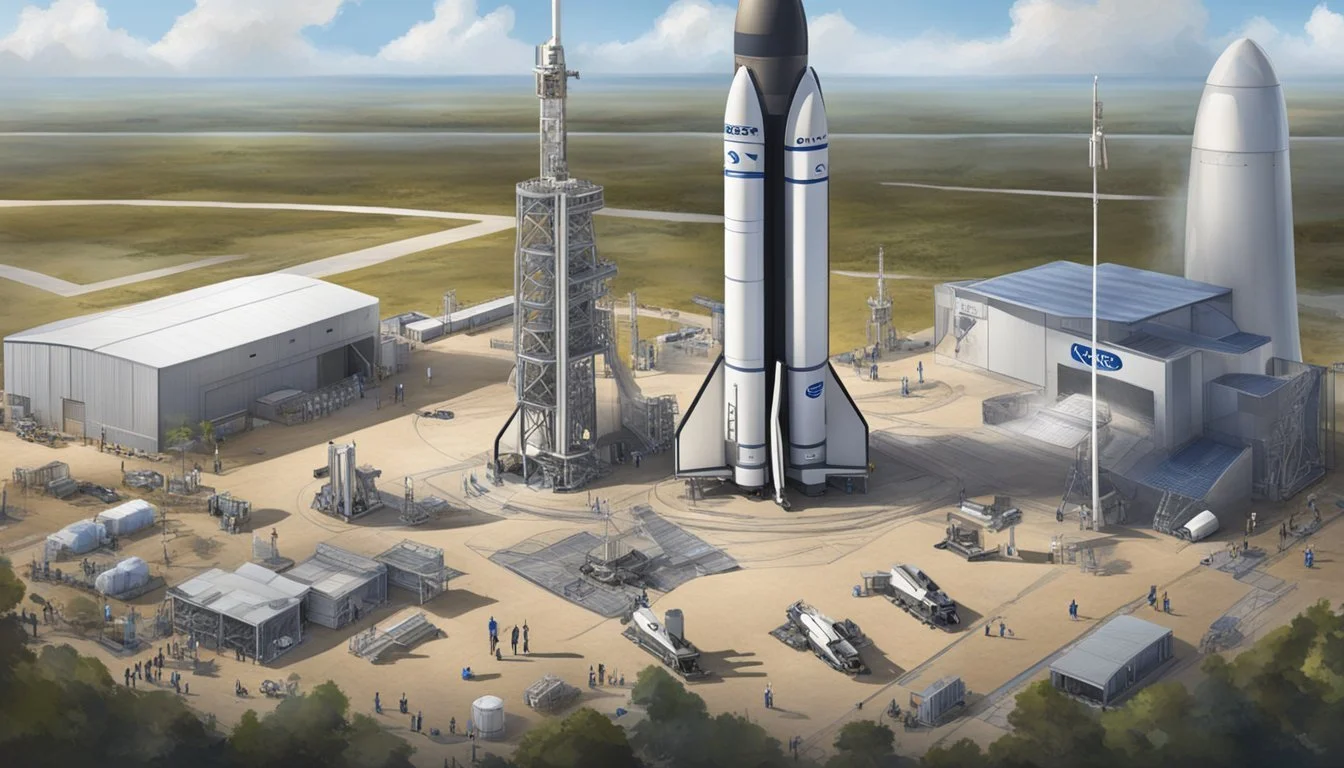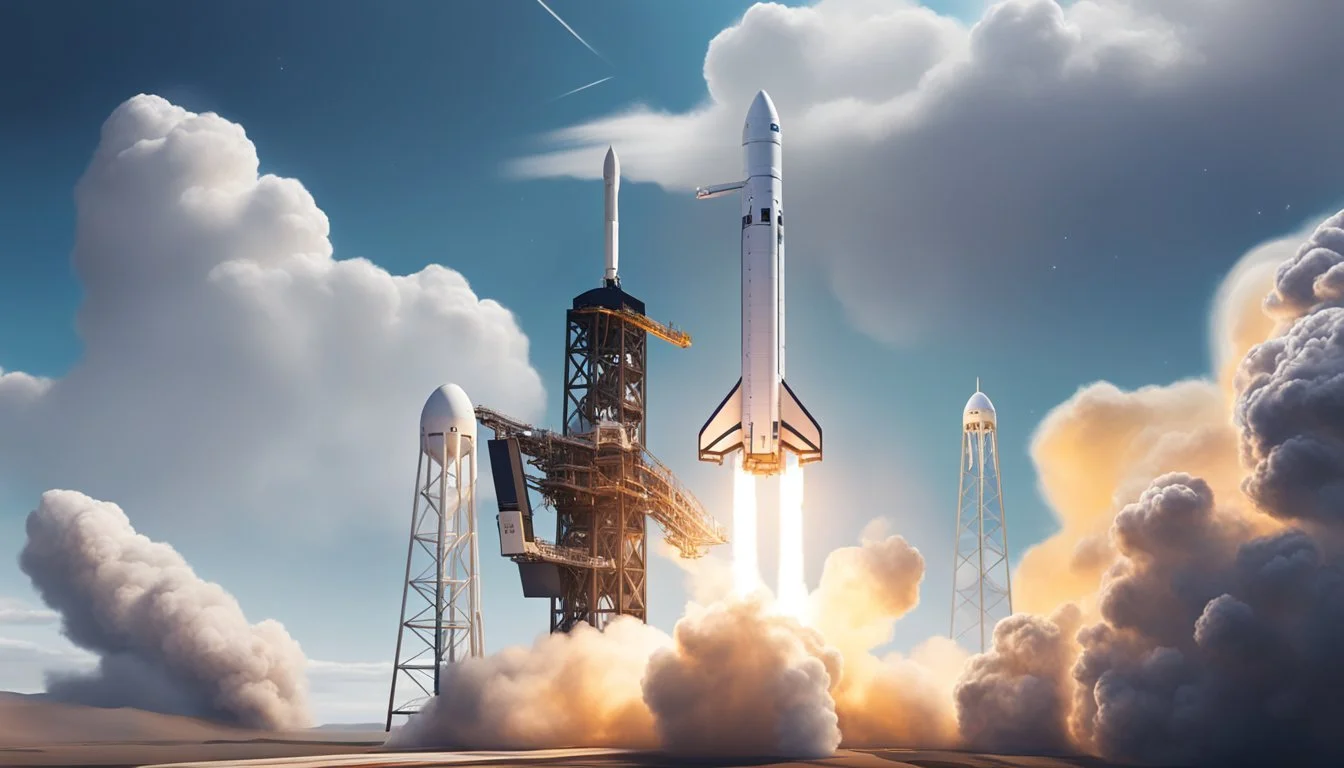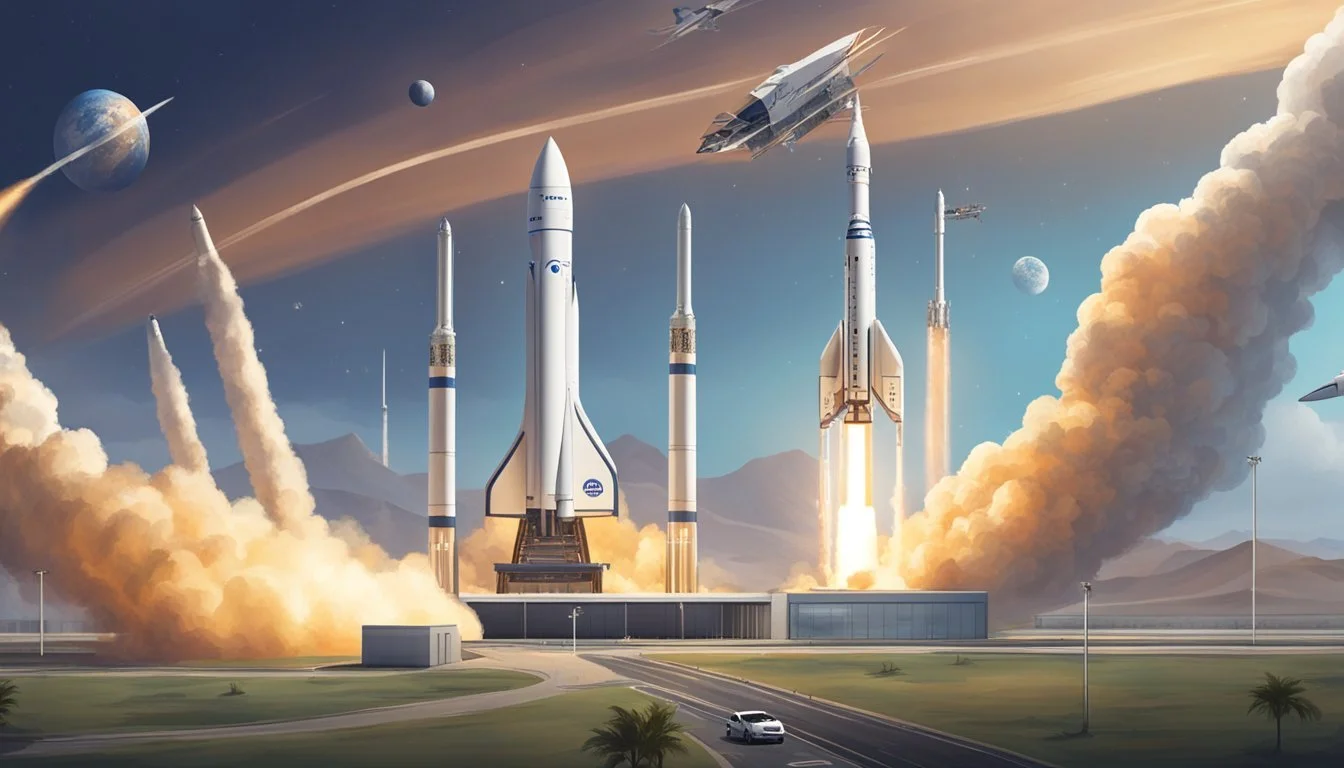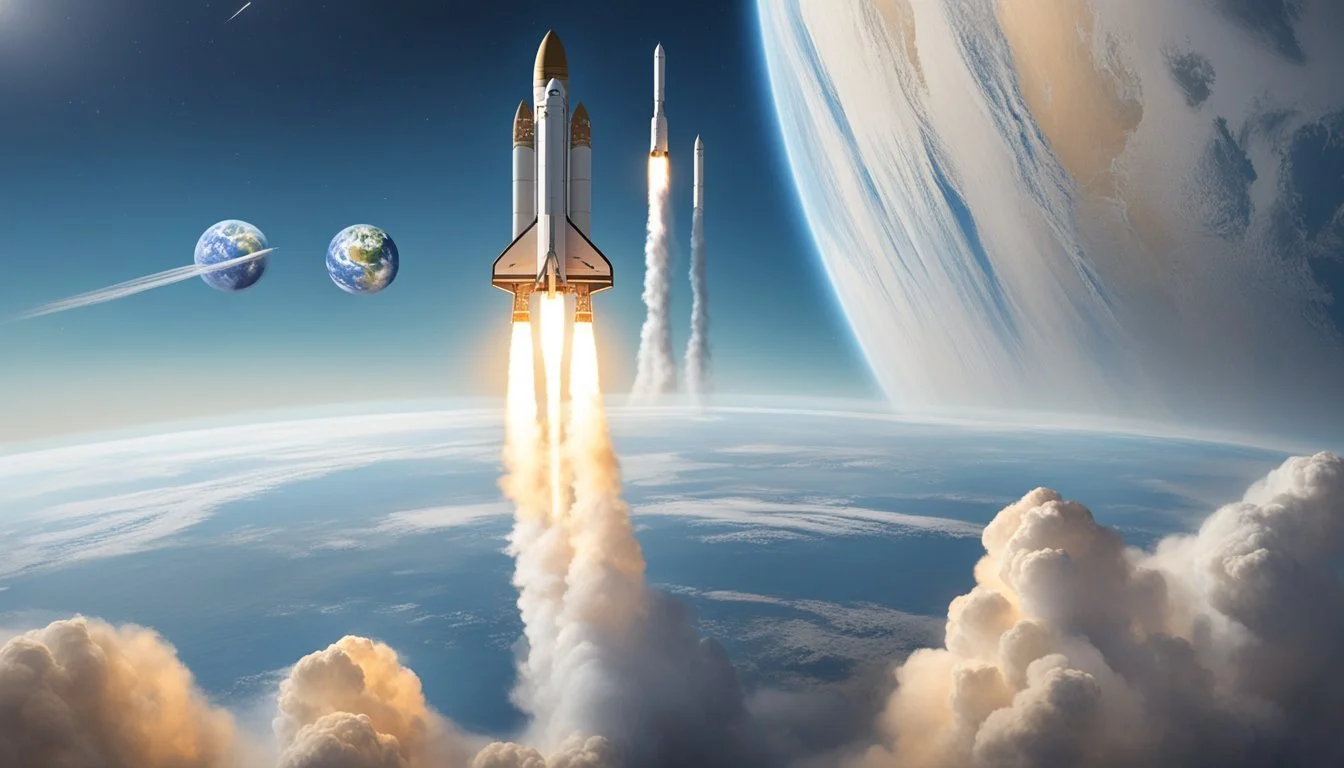SpaceX's NASA Collaboration
Pioneering the Next Era of American Spaceflight
SpaceX and NASA have forged a groundbreaking partnership that is reshaping the landscape of human space exploration. This collaboration, highlighted in the documentary "Return to Space," showcases the synergy between private industry innovation and government resources.
SpaceX's ability to develop reusable rockets and spacecraft has significantly reduced launch costs, enabling more frequent and ambitious missions for NASA. The company's Crew Dragon capsule has successfully transported astronauts to the International Space Station, marking a new era in American spaceflight.
Elon Musk's vision for space exploration aligns with NASA's goals of returning humans to the Moon and eventually reaching Mars. This partnership demonstrates how public-private collaborations can accelerate technological advancements and push the boundaries of what's possible in space exploration.
Historical Context of SpaceX-NASA Partnerships
SpaceX and NASA's collaboration has revolutionized space exploration, marking a new era of public-private partnerships in the aerospace industry. Their joint efforts have led to significant advancements in rocket technology and human spaceflight capabilities.
The Inception of SpaceX and NASA Collaboration
SpaceX entered the aerospace scene in 2002, founded by Elon Musk with the ambitious goal of reducing space transportation costs. NASA took notice of SpaceX's potential in 2006, awarding the company a $396 million Commercial Orbital Transportation Services (COTS) contract.
This initial partnership focused on developing the Dragon spacecraft and Falcon 9 rocket. The agreement aimed to create a reliable cargo delivery system to the International Space Station, filling the gap left by the retiring Space Shuttle program.
SpaceX's early successes with the Falcon 1 rocket, the first privately developed liquid-fuel rocket to reach orbit, further solidified NASA's confidence in the company's capabilities.
Key Milestones in Partnership History
The SpaceX-NASA partnership achieved several crucial milestones. In 2012, SpaceX's Dragon became the first commercial spacecraft to dock with the ISS, demonstrating the success of their collaborative efforts.
2020 marked a historic moment when SpaceX's Crew Dragon spacecraft launched NASA astronauts to the ISS. This mission, known as Demo-2, signified the return of human spaceflight launches from American soil after a nine-year hiatus.
The partnership expanded to include lunar missions, with SpaceX selected to develop the Human Landing System for NASA's Artemis program. This contract aims to return humans to the Moon and establish a sustainable presence.
Throughout their collaboration, SpaceX and NASA have continuously improved the Falcon 9 rocket and Dragon vehicles, enhancing reusability and cost-effectiveness in space transportation.
SpaceX Contract Acquisition and Objectives
SpaceX secured major NASA contracts through competitive bidding processes. These agreements aim to advance American space exploration capabilities and establish a sustainable presence on the Moon.
The Competitive Nature of Space Contracts
NASA's selection of contractors involves rigorous evaluations. SpaceX faced competition from established aerospace firms like Blue Origin, Lockheed Martin, and Northrop Grumman. The company's innovative designs and cost-effective approaches helped it stand out.
SpaceX's reusable rocket technology proved attractive to NASA. This feature promises significant cost savings over traditional expendable launch systems.
The space economy is expanding rapidly. Government contracts play a crucial role in fostering innovation and driving industry growth.
The Scope of SpaceX's NASA Contracts
SpaceX's $2.9 billion contract focuses on developing a human landing system for the Artemis program. This project aims to return American astronauts to the lunar surface by 2024.
The company's Starship vehicle will serve as the lunar lander. It's designed to transport crew and cargo between lunar orbit and the Moon's surface.
SpaceX also holds contracts for cargo resupply missions to the International Space Station. These agreements demonstrate NASA's confidence in the company's capabilities.
The collaboration extends to future Mars exploration plans. SpaceX's Starship development aligns with NASA's long-term goals for deep space missions.
Technological Advancements and Mission Support
SpaceX has pioneered innovative rocket technologies that have revolutionized space exploration. These advancements have been crucial in supporting NASA missions and pushing the boundaries of spaceflight.
Development of the Raptor Engines
The Raptor engine represents a significant leap in rocket propulsion technology. Designed for the Starship and Super Heavy launch system, it uses liquid methane and liquid oxygen as propellants.
This full-flow staged combustion cycle engine offers higher performance and efficiency compared to traditional designs. The Raptor can generate up to 230 tons of thrust at sea level.
SpaceX has conducted numerous test firings and continues to refine the Raptor engine. Its high thrust-to-weight ratio and reusability make it ideal for missions to the Moon and Mars.
Advancements in Reusable Rocket Technology
SpaceX's reusable rocket technology has dramatically reduced the cost of space launches. The Falcon 9 and Falcon Heavy rockets feature first stages that can land vertically after launch.
This capability allows SpaceX to recover and refurbish the most expensive part of the rocket. The company has successfully landed and reused boosters multiple times.
Reusability has enabled more frequent launches and increased payload capacity. It has also made space access more affordable for NASA and other customers.
The Starship, currently in development, aims to be fully reusable. This next-generation vehicle could further revolutionize space travel and support ambitious missions beyond Earth orbit.
Artemis Program and Lunar Exploration
NASA's Artemis program aims to return humans to the Moon, with plans to land the first woman and person of color on the lunar surface. SpaceX plays a crucial role in this ambitious endeavor, developing key technologies for lunar missions.
SpaceX's Role in Artemis Missions
SpaceX has been selected by NASA to develop the human landing system for the Artemis program. This partnership marks a significant milestone in commercial space exploration. The company's Starship vehicle will transport astronauts from lunar orbit to the Moon's surface.
SpaceX's reusable spacecraft design aligns with NASA's goals for sustainable lunar exploration. The Starship's capabilities include carrying large payloads and supporting extended missions on the lunar surface.
Developing the Lunar Lander and HLS Starship
The Human Landing System (HLS) Starship is a modified version of SpaceX's Starship spacecraft. It is specifically designed for lunar missions and will serve as the Moon lander for Artemis III.
Key features of the HLS Starship include:
Ability to dock with Orion spacecraft in lunar orbit
Lunar descent and ascent capabilities
Support for extravehicular activities on the Moon
SpaceX is working closely with NASA to ensure the HLS Starship meets all requirements for safe lunar landings and operations. The development process involves rigorous testing and validation to prepare for the historic Artemis III mission.
SpaceX's Contribution to Manned Spaceflight
SpaceX has revolutionized human spaceflight through its Crew Dragon spacecraft and ambitious vision for Mars colonization. The company's innovations have restored U.S. capability to launch astronauts and expanded possibilities for future space exploration.
Importance of the Crew Dragon for ISS Missions
The Crew Dragon capsule marked a pivotal moment in spaceflight history. In May 2020, it successfully transported NASA astronauts to the International Space Station (ISS), ending a nine-year gap in U.S.-based crewed launches. This achievement restored American independence in human spaceflight.
Crew Dragon's reusability and advanced technology have significantly reduced costs for NASA's ISS missions. The spacecraft's autonomous docking capability and modern design enhance safety and efficiency for crew transfers.
SpaceX's reliable launch schedule has increased the frequency of crew rotations to the ISS. This allows for more continuous scientific research and maintenance of the orbiting laboratory.
Envisioning Mars Colonization
Elon Musk's ambitious goal of Mars colonization drives SpaceX's long-term strategy. The company is developing the Starship spacecraft, designed for interplanetary travel and potential Mars landings.
SpaceX's focus on reusable rocket technology, as demonstrated with the Falcon 9, is crucial for making Mars missions economically feasible. This approach aims to dramatically reduce the cost of space transportation.
The company conducts extensive research on life support systems and in-situ resource utilization necessary for sustaining human presence on Mars. These efforts push the boundaries of space technology and inspire global interest in deep space exploration.
SpaceX's Mars plans have sparked renewed public excitement about space travel and encouraged other private companies to pursue ambitious space projects.
The Role of SpaceX's Corporate Ecosystem
SpaceX's success stems from its interconnected network of companies and technologies. This ecosystem, centered around Elon Musk's vision, leverages synergies across multiple industries to drive innovation in space exploration.
Interplay Between SpaceX, Tesla, and Starlink
SpaceX, Tesla, and Starlink form a trifecta of technological advancement under Elon Musk's leadership. SpaceX's rocket technology benefits from Tesla's expertise in electric propulsion and battery systems. This collaboration enhances the efficiency of spacecraft and launch vehicles.
Starlink, SpaceX's satellite internet constellation, relies on the company's launch capabilities to deploy its network. The project aims to provide global broadband coverage, potentially revolutionizing internet access worldwide.
Tesla's manufacturing prowess, honed in the electric car industry, informs SpaceX's production methods at its Hawthorne, California facility. This cross-pollination of ideas and processes accelerates development in both the aerospace and automotive sectors.
The shared resources and knowledge across these entities create a powerful ecosystem. It enables SpaceX to tackle complex space missions while simultaneously advancing sustainable transportation and global connectivity solutions.
The Impact of SpaceX's Innovation on Launch Costs
SpaceX has revolutionized the aerospace industry through technological innovation and cost reduction strategies. The company's focus on reusable rockets has significantly lowered launch costs compared to traditional providers.
SpaceX's Falcon 9 rocket launches average around $60 million, a stark contrast to competitors like United Launch Alliance (ULA), whose launches can cost up to $380 million. This dramatic price difference has made space access more affordable for a wider range of clients.
The company's innovative approach includes:
Reusable first-stage boosters
In-house manufacturing of rocket engines
Streamlined production processes
Rapid iteration and testing cycles
These factors have contributed to SpaceX's ability to offer launches at a fraction of the cost of its competitors. The reduction in launch costs has opened up new possibilities for commercial and government space missions.
SpaceX's success has also spurred competition in the aerospace industry, pushing other companies to innovate and reduce their own costs. This shift has benefited NASA and other space agencies by providing more cost-effective options for their missions.
The impact of SpaceX's innovations extends beyond just launch costs. Their advancements in rocket technology have paved the way for more ambitious space exploration projects, including plans for commercial human landers and Mars missions.
Future Prospects and Continuing Challenges
SpaceX's collaboration with NASA continues to shape the future of space exploration. The partnership faces both exciting opportunities and significant hurdles as it aims to push the boundaries of human spaceflight and scientific discovery.
Advancing Deep Space Exploration
NASA's Artemis program stands at the forefront of deep space exploration efforts. Artemis I, an uncrewed mission, successfully orbited the Moon in 2022. Artemis II, scheduled for 2024, will carry astronauts around the Moon. Artemis III aims to land humans on the lunar south pole by 2025.
SpaceX's Starship vehicle plays a crucial role in these missions. The company is developing a lunar lander version of Starship for Artemis III. This ambitious project faces technical challenges and tight deadlines.
NASA Administrator Bill Nelson emphasizes the importance of returning to the Moon as a stepping stone for future Mars missions. The agency is working with SpaceX and other partners to develop technologies for long-duration space travel and habitation.
Strategic Partnerships and Market Dynamics
SpaceX's relationship with NASA has evolved into a strategic partnership. The company's ability to provide reliable and cost-effective launch services has reshaped the space industry landscape.
Other companies are vying for a share of the market:
Blue Origin, founded by Jeff Bezos, is developing its New Glenn rocket and lunar lander
Dynetics is working on alternative lunar lander designs
Draper is contributing guidance and navigation systems
Competition in the commercial space sector is intensifying. This dynamic environment drives innovation but also raises concerns about market concentration and dependency on a single provider.
NASA continues to balance its partnerships with multiple companies to ensure redundancy and foster technological advancements. The agency's future strategies will likely involve a mix of established players and emerging startups to maintain a robust and diverse space industry ecosystem.





